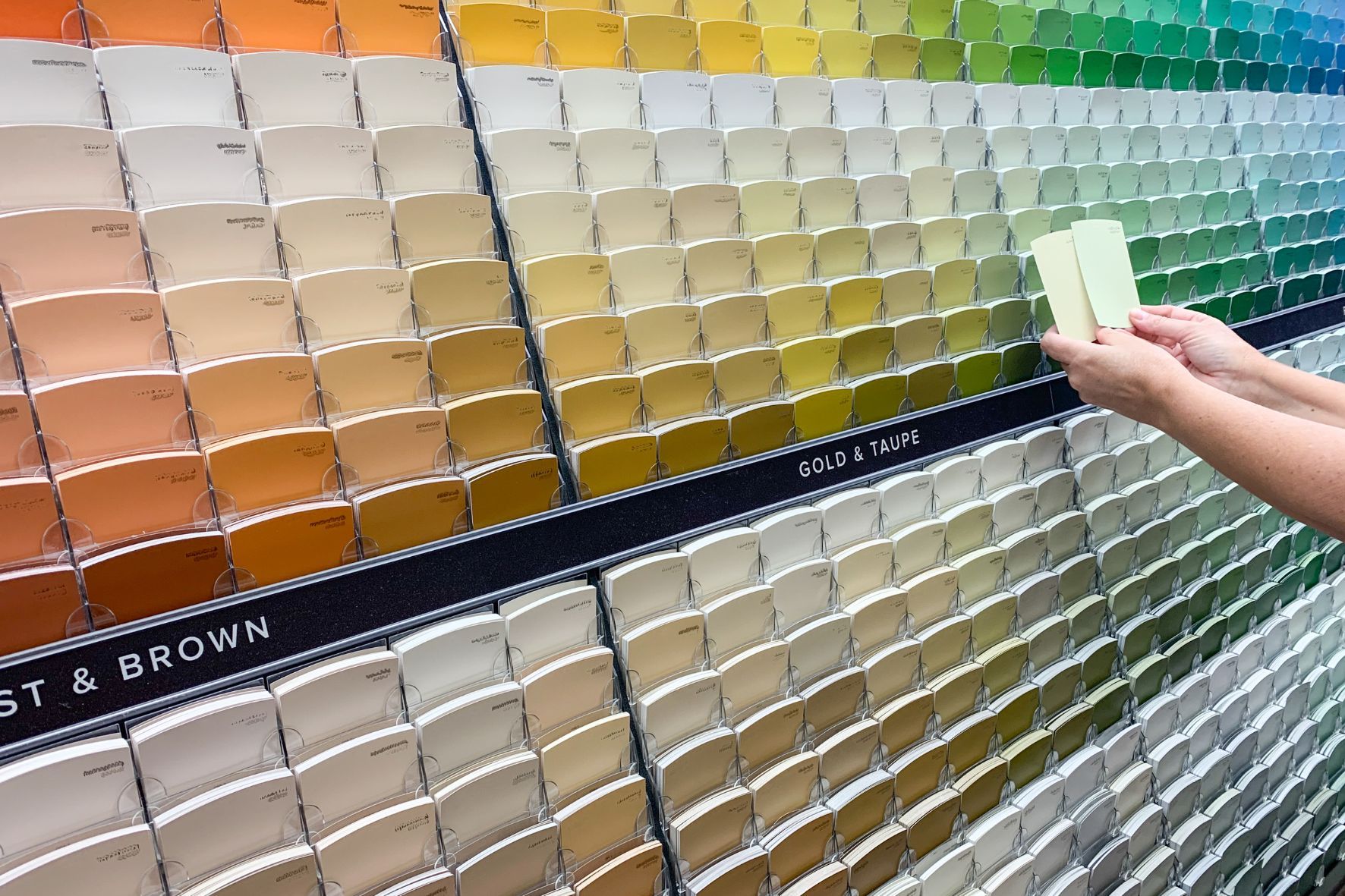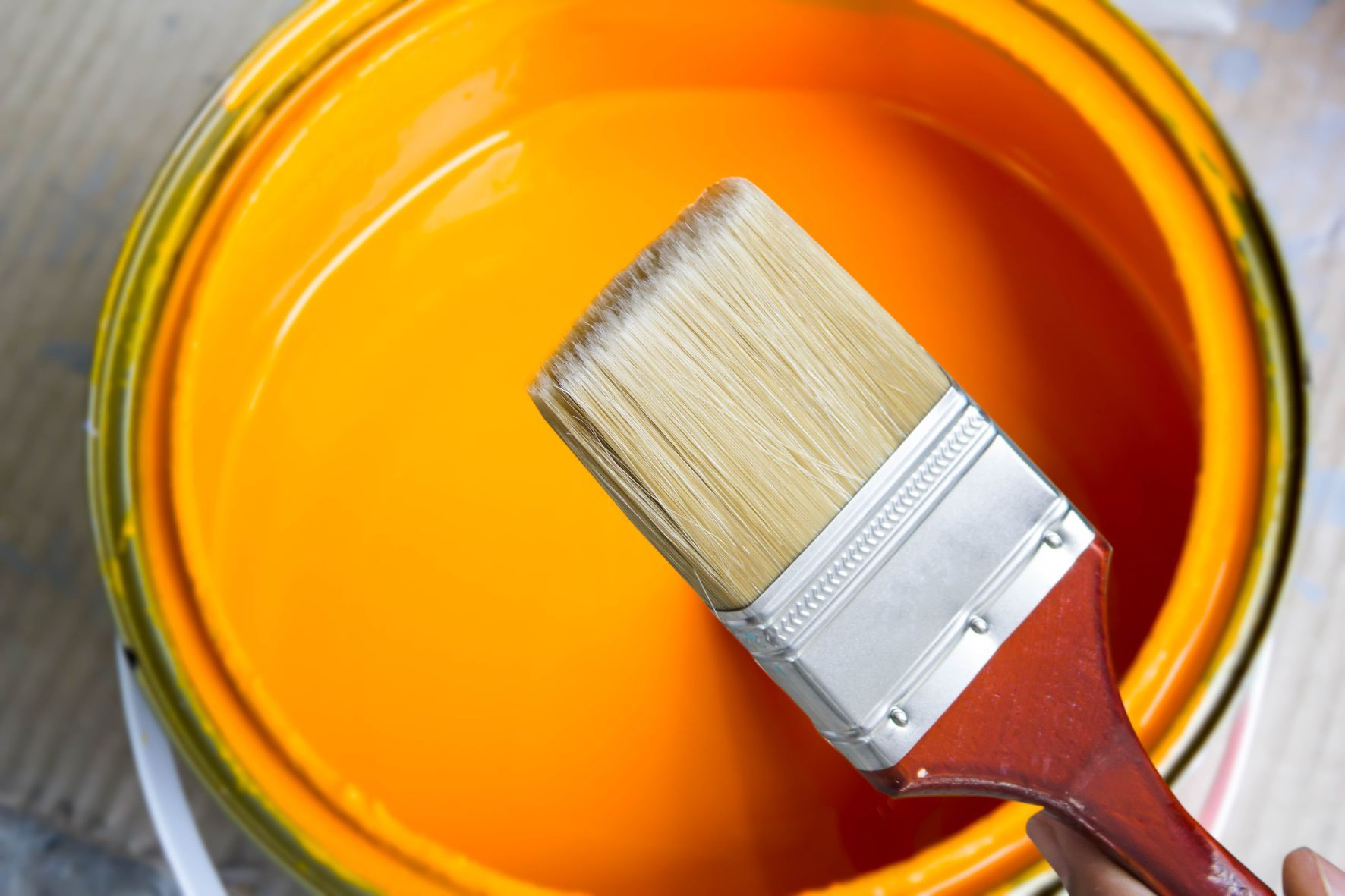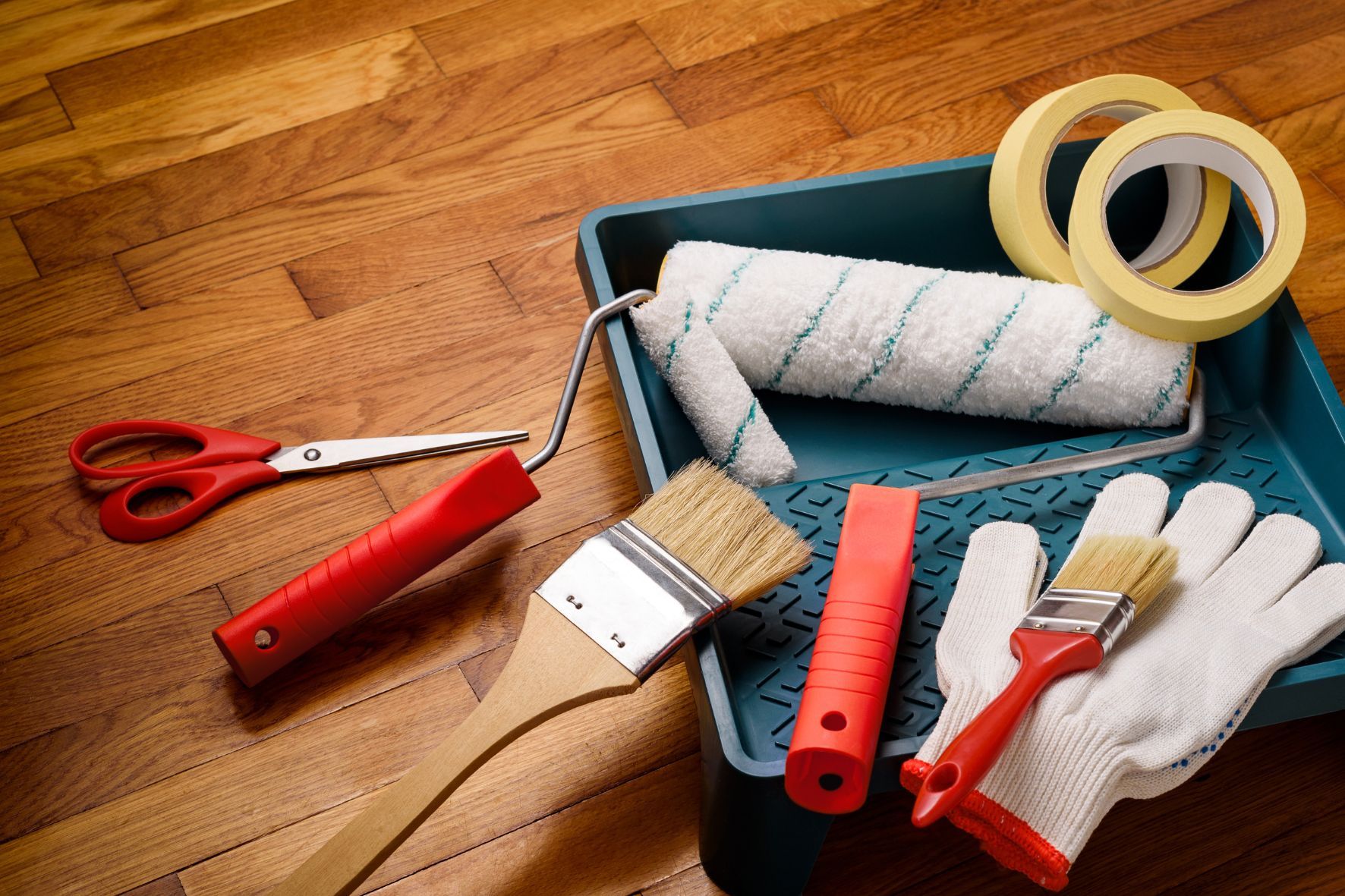Choosing the right paint for your walls is essential to achieving the desired aesthetic and durability in your South Florida home. With numerous options available, it’s important to consider factors such as color, finish, quality, and the specific requirements of your living space. In this comprehensive guide, we will explore these considerations in detail to help you make the best decision for your home.

Consider the Purpose of Your Room
First and foremost, consider the purpose of the room. Different areas of your home require different types of paint. For example:
High-Traffic Areas
High-traffic areas like hallways, kitchens, and children’s rooms benefit from paints that are more durable and easier to clean. Look for paints with a higher sheen, such as satin or semi-gloss finishes, which can withstand frequent cleaning and resist stains.
Relaxing Spaces
For bedrooms and living rooms, you may want a softer, more ambient tone for a more relaxed feeling. Matte or eggshell finishes can create a calm and serene environment, perfect for unwinding after a long day. These finishes have a lower sheen, which contributes to a cozy and intimate atmosphere.
Utility Areas
Bathrooms, laundry rooms, and other utility areas require paint that can handle high humidity and moisture levels. Semi-gloss or high-gloss paints are excellent choices for these spaces, as they are more resistant to mildew and easier to wipe down.
Understanding the room’s function will help you determine the appropriate paint characteristics, ensuring that the paint not only looks good but also performs well under the conditions of that specific space.
Selecting the Right Color
Choosing the right color is subjective and largely dependent on your personal preferences and the overall design scheme of your home. However, there are some general guidelines that can help you make a more informed decision.
Consider Lighting
Lighting plays a crucial role in how colors appear. Natural light changes throughout the day, affecting how paint colors look at different times. Artificial lighting, whether warm or cool, can also influence color perception. It’s essential to test paint samples on your walls and observe them under various lighting conditions before making a final decision.
Room Size and Mood
The size of the room and the mood you want to create are also important factors. Lighter colors can make a small room feel more spacious and airy, while darker colors can add warmth and coziness to a larger room. Neutral shades provide versatility and can be easily paired with different styles, making them a safe choice if you’re uncertain about bolder colors.
Existing Furniture and Decor
Consider the existing furniture and decor in the room. The paint color should complement these elements rather than clash with them. If you have a specific piece of furniture or artwork that you want to highlight, choose a paint color that will enhance its features.
Popular Color Choices
While color preferences are personal, some popular choices in South Florida homes include:
Soft Whites and Creams: These shades provide a clean and timeless look that can make any room feel fresh and bright. Cool Blues and Greens: These colors are calming and serene, perfect for creating a tranquil environment. Warm Neutrals: Shades like beige, taupe, and gray offer a warm and inviting atmosphere, suitable for almost any room.
By considering these factors, you can choose a color that not only reflects your personal style but also enhances the overall design and functionality of your space.

Understanding Different Paint Finishes
Paint finishes, or sheens, affect the final look of your walls and their ability to withstand wear and tear. Understanding the characteristics of each finish will help you make the best choice for your specific needs.
Flat/Matte Finish
Appearance: Non-reflective, provides a smooth and velvety look. Best For: Ceilings and low-traffic areas where imperfections need to be hidden. Advantages: Great for hiding imperfections on walls and ceilings. Disadvantages: Less durable and harder to clean than other finishes.
Eggshell Finish
Appearance: Slightly reflective with a low sheen. Best For: Living rooms, dining rooms, and bedrooms. Advantages: Offers a balance between a matte and a satin finish, providing a slight sheen without being too shiny. Disadvantages: Less durable than satin or gloss finishes, but easier to clean than flat finishes.
Satin Finish
Appearance: Smooth with a soft sheen. Best For: High-traffic areas like hallways, kitchens, and bathrooms. Advantages: Durable and easy to clean, resistant to moisture and mildew. Disadvantages: Can highlight imperfections on the walls.
Semi-Gloss Finish
Appearance: Moderately shiny and reflective. Best For: Kitchens, bathrooms, trim, and doors. Advantages: Highly durable and easy to clean, ideal for areas that need frequent washing. Disadvantages: Can show imperfections more than satin or eggshell finishes.
High-Gloss Finish
Appearance: Very shiny and reflective. Best For: Trim, doors, and cabinets. Advantages: Extremely durable and easy to clean, providing a polished and elegant look. Disadvantages: Highlights imperfections and can be too shiny for large wall areas.
Consider the practicality, desired aesthetic, and maintenance requirements when choosing the appropriate finish for your space. Selecting the right finish will ensure that your walls not only look beautiful but also stand up to the demands of daily life.
Quality Matters
Investing in high-quality paint is essential for long-lasting results. Premium-grade paints provide better coverage, durability, and color retention, ensuring your walls stay vibrant for years to come. Here are some reasons why quality matters:
Better Coverage
High-quality paints have higher pigment levels, which means they cover surfaces more effectively with fewer coats. This can save you time and money in the long run, as you won’t need to apply as many layers to achieve the desired look.
Durability
Premium paints are more resistant to fading, cracking, and peeling. They also tend to be more washable, allowing you to clean walls without damaging the finish. This is particularly important in high-traffic areas or homes with children and pets.
Color Retention
Quality paints maintain their color better over time, even in areas exposed to sunlight or harsh weather conditions. This ensures that your walls continue to look fresh and vibrant, enhancing the overall aesthetic of your home.
Environmental Impact
Many high-quality paints are formulated to be more environmentally friendly, with lower levels of volatile organic compounds (VOCs). These paints are not only better for the environment but also safer for your family’s health.
Brand Reputation
Reputable brands invest in research and development to create paints that perform well and meet high standards. Reading reviews and seeking recommendations can help you choose a reliable product that delivers excellent results.

The Importance of Surface Preparation
Proper surface preparation is key to achieving a professional-looking paint job and ensuring the longevity of your paint. Here’s what you need to do to prepare your surfaces:
Cleaning: Before you start painting, clean the walls thoroughly to remove dirt, dust, and grease. Use a mild detergent solution and a sponge or cloth to wipe down the surfaces. Rinse with clean water and let the walls dry completely. Repairing: Inspect the walls for any cracks, holes, or imperfections. Use a spackling compound to fill in any gaps or damage. Once the compound is dry, sand the area smooth to create an even surface. Priming: Applying a primer is essential, especially if you’re painting over a dark color or a new, unpainted surface. Primer helps the paint adhere better and ensures a uniform finish. Choose a primer that is compatible with your paint type and apply it evenly to the prepared surface. Taping: Use painter’s tape to mask off areas you don’t want to paint, such as trim, windows, and doors. This will help you achieve clean, straight lines and prevent accidental smudges.
By taking the time to properly prepare your surfaces, you can ensure a smoother application and a more professional-looking finish.
Tools and Equipment
Having the right tools and equipment is essential for a successful painting project. Here’s a list of what you’ll need:
Brushes and Rollers
Brushes: Use high-quality brushes for cutting in around edges and painting trim. Choose brushes with synthetic bristles for latex paints and natural bristles for oil-based paints. Rollers: Rollers are ideal for covering large wall areas quickly and evenly. Choose the right roller nap for your surface; shorter naps for smooth surfaces and longer naps for textured surfaces.
Paint Trays and Liners
Paint Trays: A paint tray is essential for holding and distributing paint evenly on your roller. Liners: Using disposable liners can make cleanup easier and help prolong the life of your paint tray.
Extension Poles
Extension poles are useful for reaching high walls and ceilings without the need for a ladder. They can be attached to your roller handle for added convenience.
Drop Cloths
Drop cloths protect your floors and furniture from paint spills and splatters. Use canvas or plastic drop cloths to cover the area around your painting project.
Sandpaper and Scrapers
Sandpaper and scrapers are necessary for preparing surfaces and smoothing out any imperfections. Use a variety of grits to achieve the desired smoothness.
Painter’s Tape
Painter’s tape is essential for masking off areas you don’t want to paint. Choose a tape that is easy to apply and remove without damaging surfaces.
Cleaning Supplies
Have cleaning supplies on hand for quick cleanup of spills and splatters. Keep a bucket of water, a sponge, and a cloth nearby while you work.
Having the right tools and equipment will make your painting project more efficient and help you achieve professional results.

Maintenance and Care
Proper maintenance and care can help extend the life of your paint job and keep your walls looking fresh and vibrant. Here are some tips for maintaining your painted surfaces:
Regular Cleaning
Regularly dust and clean your walls to prevent dirt and grime buildup. Use a soft cloth or sponge and a mild detergent solution for cleaning. Avoid using harsh chemicals or abrasive scrubbers, as they can damage the paint.
Touch-Ups
Keep some leftover paint for touch-ups. Small nicks and scratches can be easily fixed with a bit of paint and a small brush. Addressing these issues promptly can prevent further damage and keep your walls looking pristine.
Protecting High-Traffic Areas
Consider using washable or scrubbable paint in high-traffic areas. These paints are designed to withstand frequent cleaning without losing their finish. You can also use wall protectors or chair rails to prevent damage from furniture and other objects.
Addressing Moisture Issues
In areas prone to moisture, such as bathrooms and kitchens, use paint that is resistant to mildew and mold. Ensure proper ventilation to reduce humidity levels and prevent moisture-related problems.
Inspecting for Damage
Regularly inspect your walls for signs of damage, such as peeling, cracking, or bubbling. Address any issues promptly to prevent further deterioration and maintain the integrity of your paint job.
By following these maintenance tips, you can keep your walls looking beautiful and extend the life of your paint job.
Consult With A Professional
When in doubt, seek advice from professionals such as interior designers, paint specialists, or contractors like us at Tru Colors Contracting . We can offer valuable insights based on our expertise and experience. Here are some benefits of consulting with a professional:
Personalized Advice
Professionals can provide personalized advice tailored to your specific needs and preferences. They can help you choose colors and finishes that complement your home’s design and meet your practical requirements.
Expert Techniques
Paint specialists and contractors have the skills and knowledge to apply paint correctly, ensuring a smooth and even finish. They can also advise on the best preparation and application techniques to achieve the desired results.
Cost and Time Efficiency
Hiring a professional can save you time and money by ensuring the job is done right the first time. They can also help you avoid common pitfalls and mistakes that could lead to costly repairs or rework.
Specialty Surfaces
If you have specialty surfaces, such as textured walls, wood, or metal, a professional can recommend the best products and techniques for painting these areas. They can also advise on any additional steps needed to prepare and protect these surfaces.
Choosing the right paint for your South Florida home involves considering various factors, from the purpose of the room and the right color to the paint finish and quality. By following these guidelines, you can select paint that not only enhances the beauty of your home but also suits your lifestyle and personal preferences.
Still looking for help to complete your project? Contact us today at Tru Colors Contracting!
